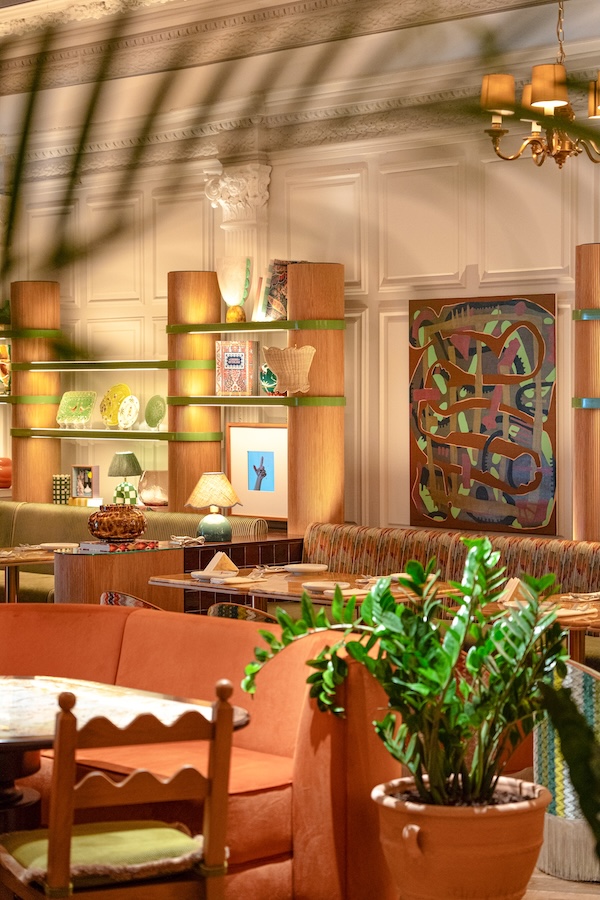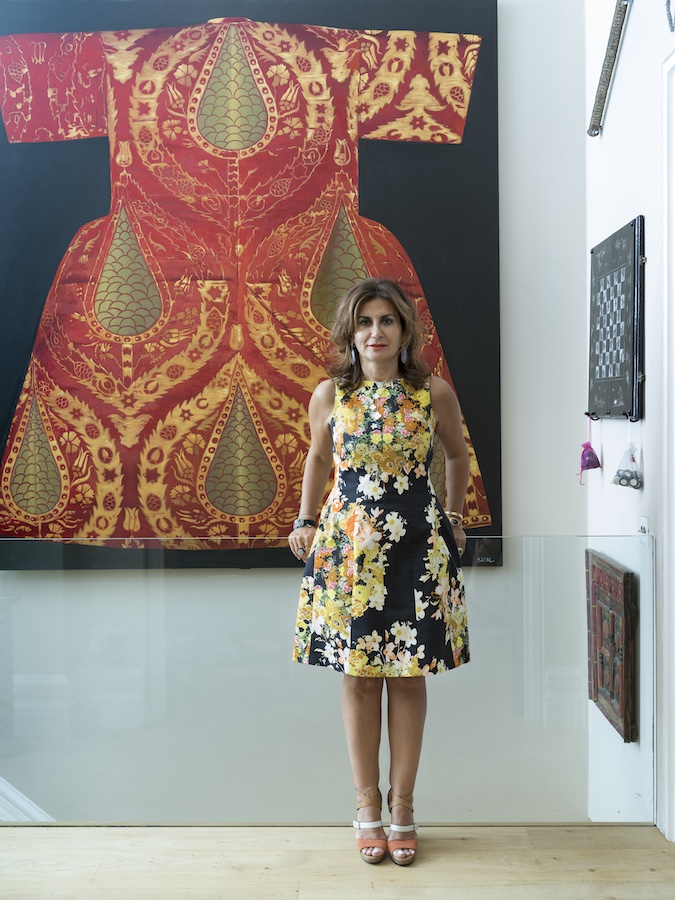DUBAI: The road to success is rockier than most care to admit. Even years past that first big break, the life of an actor is often a stop-and-start existence, with work drying up when you need it most.
In 2011, Palestinian-American actor Waleed Zuaiter —now one of the most acclaimed Arab actors in the world having secured a BAFTA nomination in 2021 for his starring role in “Baghdad Central” — was experiencing one of those lulls. The big roles weren’t coming and it was affecting him more than he let on.
It had only been two years since he starred opposite George Clooney in “The Men who Stare at Goats,” and here he was, a family to take care of, wondering whether he should continue pursuing his dream or give up acting entirely.

Waleed Zuaiter with George Clooney and Ewan McGregor in 'The Men Who Stare at Goats.' (Alamy)
It was then that he got a call from the creators of a new series called “Homeland.”
“I remember, ‘Homeland’ came around (at a time when) we couldn't pay our rent. It's as simple as that,” Zuaiter tells Arab News.
They wanted him to play a terrorist. It was something he really didn’t want to do.
Earlier in his life, Zuaiter had never imagined he would be viewed as an outsider in America. Born in the US, he moved with his family to Kuwait and at the age of five, growing up in the Gulf, he had no concept of himself as ‘different’ in any way, attending an American school with a diverse array of friends and interests.
“I never grew up with real racism. (Kuwait) was a small country. My dad's best friend was Sudanese, and so I had no concept of a separation between races. I had friends from all over, and we were listening to hard rock and heavy metal like AC/DC and Iron Maiden,” says Zuaiter.

Waleed Zuaiter in Chicago Justice (2017). Supplied
Zuaiter had a sense of himself, but the dream of becoming an actor meant to him — as it does to most actors — the ability to become anyone. It wasn’t until he got into the industry that he realized that ‘becoming anyone’ wasn’t really on the cards for Arabs — that they tended to be put into a very small box, even if it’s sometimes a box made with the best of intentions.
“When I came into acting, I didn't see it as, ‘I'm originally Arab, I have an Arabic name, I should only be up for Arab roles.’ But that's kind of how the industry works here. Even if you're like me, and you don't speak with an accent, and you're American. The industry thought, ‘Oh, this is a very hot topic, there's material that's coming out. Let's look for the people that can bring authenticity to it.’ There was a good intention there, but what winds up happening is you get pigeonholed. That was very frustrating for me,” says Zuaiter.
“I just wanted to make movies like Jon Favreau’s ‘Swingers.’ Those are the kinds of roles and stories that I'm interested in playing. But the TV roles I was offered were terrorists.”
Zuaiter took the role in “Homeland,” and while the experience ended up being a positive one, as Zuaiter was able to imbue the menacing role with nuance, depth and humanity, in a space that allowed him to do that, it wasn’t where he ultimately wanted to be. The producers were so impressed that they asked him to come back as another character. This time, he refused. He knew what he needed next, and it was a story that came from the Arab world rather than gazing at it from afar.

Waleed Zuaiter in Omar (2013). Supplied
So Zuaiter got in touch with an old friend, Hany Abu Assad, the acclaimed Palestinian director behind “Paradise Now,” whom he had met years earlier.
“A mutual friend said to me, ‘You should get in touch with Hany, because he's written something that's really, really great.’ I called him, and he said ‘Yes, and I actually wrote a role for you in this.’”
Zuaiter would end up doing more than lending his acting talents. He got together his Palestinian family and friends and they made the film — 2013’s “Omar” — using their own capital. The film earned an Oscar-nomination, one of only two Palestinian feature-length films in history to have been nominated.
“Essentially, I raised the whole budget, I brought on my brothers, and they helped bring in some other investors. Hany had that same ambition of ‘Let's get our own people to invest in us.’ And that’s what we did,” Zuaiter explains. “Around 95 percent of the investment for Omar was Palestinian private equity, with another 5 percent from Dubai. And we're very thankful for it. It was rewarding on so many levels.”
The experience would embolden Zuaiter, allowing him to enter the next phase of his career, working across genres and continents until he was finally able to land the biggest role of his career, the lead in a prestige TV drama that portrayed Iraq as Hollywood never had before — “Baghdad Central,” now streaming on Starzplay Arabia.

Still from Baghdad Central (2020). Supplied
“What did this show give me? It gave me a voice. I learned to trust myself. I learned so much about the craft, so much about responsibility. For the first time, I had a real, genuine voice from the very first rehearsals, and I learned how to wield it. And to do that playing an Arab hero — not a terrorist — was such an honor, especially because we very rarely get to see it,” he says.
Zuaiter was also struck by the show’s ability to not only amplify the voices of those that are so often marginalized, but to do so while also making the Iraqi characters’ American and British foils three-dimensional as well, giving the show a richness that it would not otherwise have had.
The experience helped turn Zuaiter into the leader that he never knew he could be, both on screen and off. He has now founded a production company with his wife Joana, whom he credits with saving his career again and again, called FlipNarrative.

Waleed and Joana Zuaiter at the Virgin Media British Academy Television Awards 2021. Getty Images
“So much of our identity as a company is the embodiment of who we are. Our mission is to amplify the voice of underrepresented and historically misrepresented voices around the world, starting with a focus on stories coming out of the Middle East,” Zuaiter says. “We’re a global mission-based company, because we realize there’s a global audience out there and we have always felt like insider-outsiders, allowing us to bridge those borders and make those connections.”
FlipNarrative has already announced six projects from across the Arab world. But first Zuaiter’s tackling another dream, a pure actor’s dream — playing someone totally outside his own lived reality. As the villain in the upcoming second season of British crime drama “Gangs of London” he won’t be an Arab at all, he’ll be playing a Georgian. It’s an experience he’s already reveling in.
“I just want to expand the types of roles that I play. I want a sense of play. They said, ‘Listen, if you want to play him as Palestinian, we can do that’. I said, ‘No, I played enough Palestinian gangsters. I would love to play a Georgian gangster, That's exactly why I'm an actor,’” he says. “Hopefully, there’ll be more of those roles. I just want to be free.”


























